Weaving Interpretive Stories and Re-awakening Wampum Objects and Archives in Museums
Written by Margaret Bruchac
In August 2017, several members of the Wampum Showcase group gathered together at the Deyohahá:ge: Indigenous Knowledge Centre at Six Nations Polytechnic Institute in Ohsweken, Ontario, for three days of talking, dreaming, and strategizing about wampum research.
Team leaders Marge Bruchac, Rick Hill, and Alan Corbiere shared their extensive files of wampum documentation and photographs, Georgia Carley contributed insights from her research on colonial treaties, and Jessica Dolan assisted with coordinating the meeting and transcribing notes. The team aims to collectively develop techniques for material analysis, documentary research, and cultural consultation that can effectively be used to identify poorly provenanced or otherwise mysterious wampum belts in museum collections.
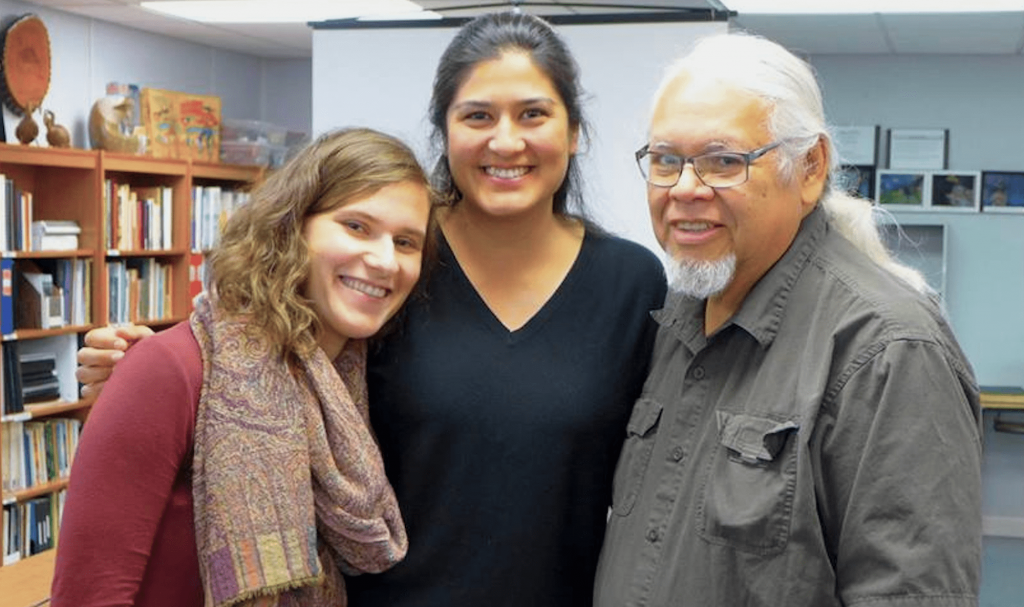
Since the 1980s, Hill has been methodically tracking Haudenosaunee wampum belts that left Native hands (often under mysterious circumstances) and landed in museums and private collections. Corbiere has been conducting similar research on Anishinaabe wampum belts used in the Great Lakes region. Repatriation research is difficult, however, since so many museums represent wampum belts as mysterious and almost unidentifiable relics. In 2009, Bruchac collaborated with Hill to develop restorative methods (including archival research, object cartography, material analysis, consultations, and ethnographic interviews) to recover wampum data. That research evolved into the Wampum Trail Project with field research funding from the University of Pennsylvania Museum of Archaeology and Anthropology (Penn Museum).
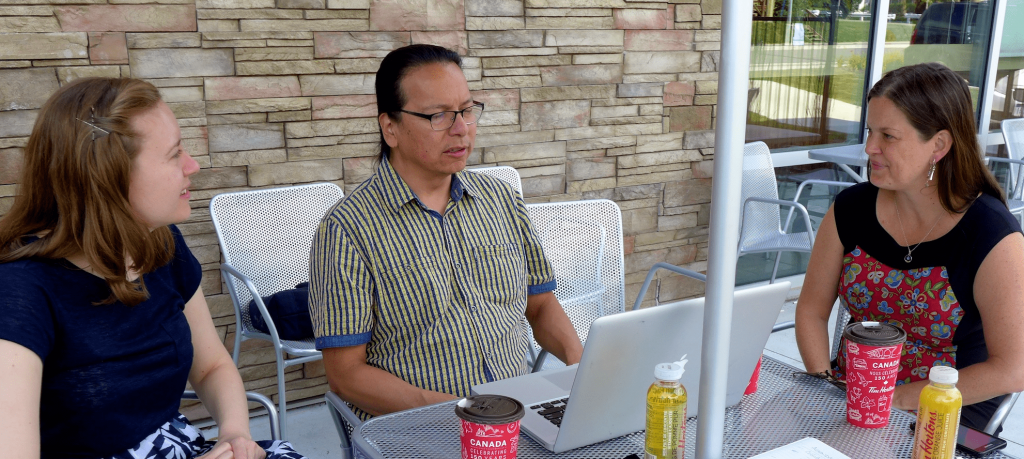
Many of the historic wampum belts that appear to be unknown actually include important elements that make them identifiable—anomalous beads (glass, stone, bone, clay, etc.); regional patterns of twining warp and weft; evidence of repair and re-use of beads and warp strands; and dramatic differences between historical and modern belts.
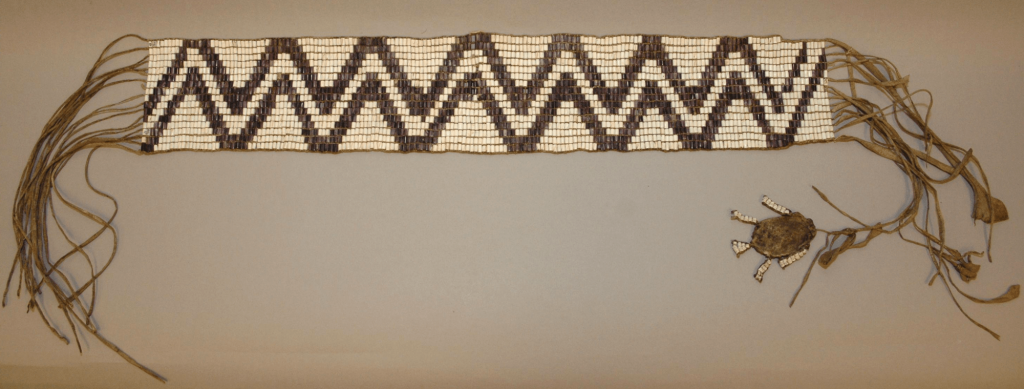
The discussion included close studies of photographs for material analysis, comparing samples of wampum beads, belts, and composite elements from objects in multiple museum collections. The most intense focus was on three iconic but heretofore poorly understood wampum belts:
- a zigzag wampum belt with an attached beaver seal at the British Museum (see above image)
- the so-called “Great Wampum Belt of Union” at the National Museum of Natural History (see banner at top of page for an extreme close-up of it)
- and an unidentified glass wampum belt at the Royal Ontario Museum (see below image)
The zig-zag belt is presumed to be Haudenosaunee; the other two are presumed to be Anishinaabe. In each case, the group successfully identified new details and gleaned new insights that cast further light on the origins and significance of each belt.
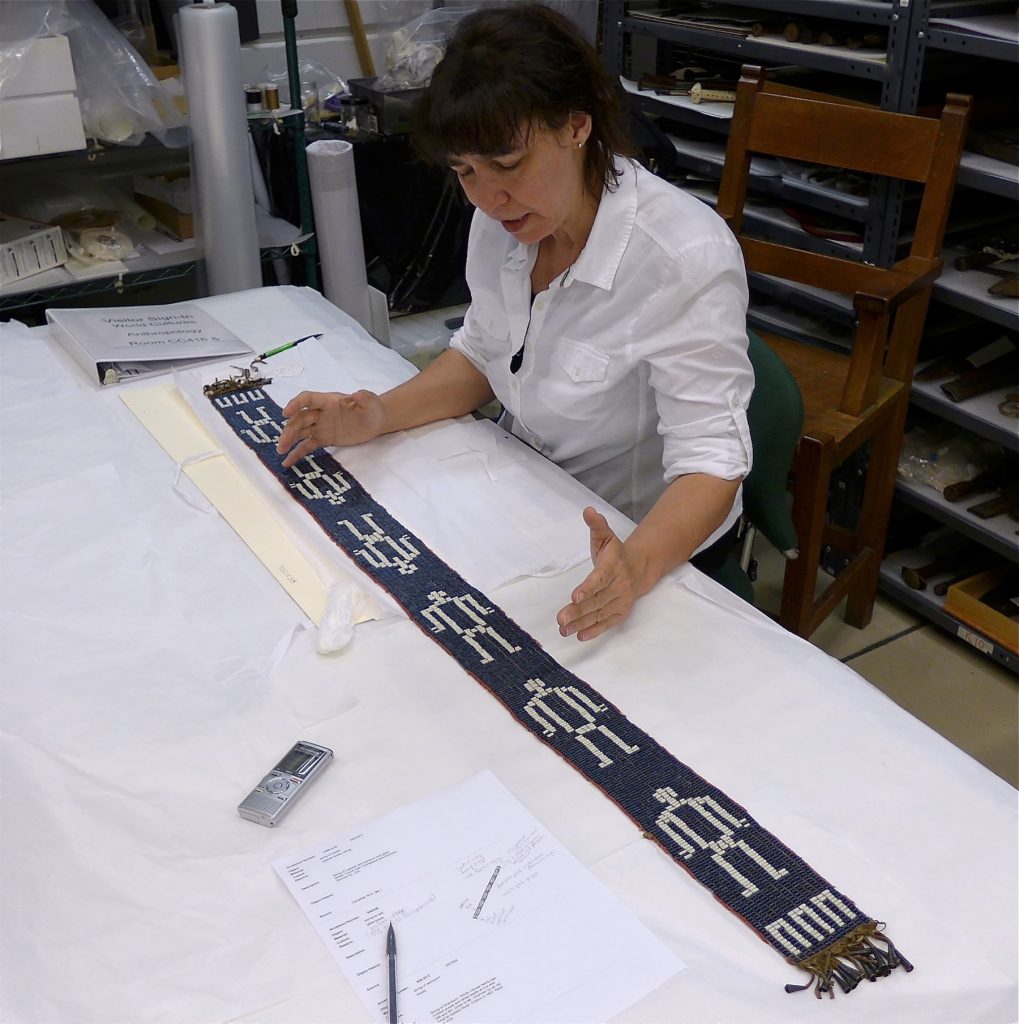
“Wampum” is a wide-ranging topic. The group examined photographs of ethnographic objects—including dolls, clubs, moccasins, wooden bowls—adorned with wampum beads. Some of these beads were drilled and still contain traces of weft fiber, suggesting they were borrowed from woven collars or belts. The group also looked at illustrations of wampum, while pondering European understandings of Indigenous wampum diplomacy.
One particularly intriguing document, housed at the American Philosophical Society, illustrates 34 wampum belts carried by a Lenape chief to a meeting with the Haudenosaunee in 1712. The text beside an illustration of a zig-zag wampum belt (which closely resembles the belt housed at the British Museum) notes that this belt ensures “That when they arrive, they would fully hear and understand them, and that they may have liberty to pass and re-pass in all places.”
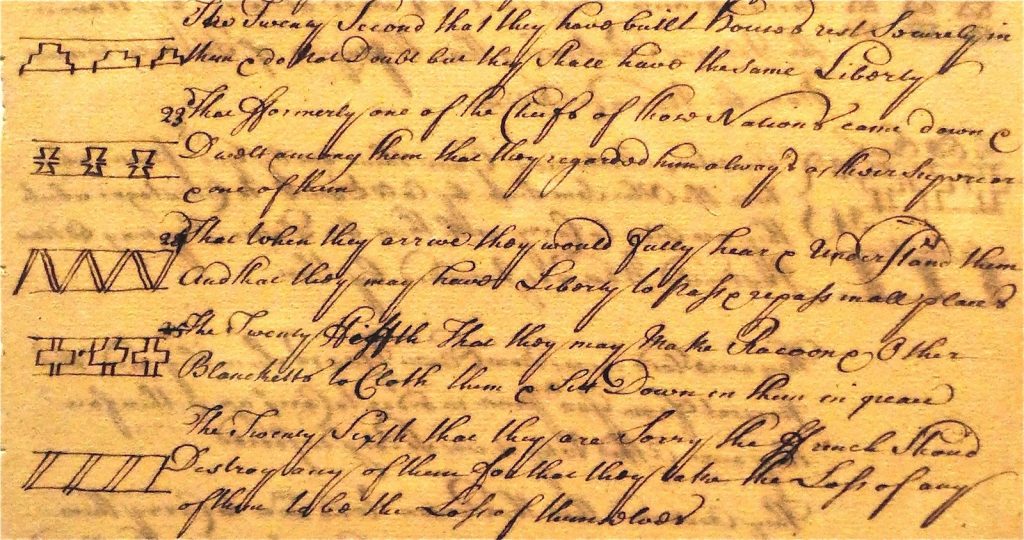
In addition to these discussions, the team reviewed recent examinations of three mysterious wampum belts in the collections of Parks Canada, including a zig-zag belt and a belt presumed to be associated with the 1701 Great Peace on Montreal. To contextualize these and other wampum objects, the group plans to expand to include other wampum researchers—notably Jonathan Lainey, Darren Bonaparte, and Brian Charles, among others—in future meetings.
Team members are currently working on research articles that will be posted to the Wampum Trail blog and GRASAC website. In November 2017, Rick Hill and Margaret Bruchac shared insights from some of their most recent wampum research at the 25th Anniversary Conference at the Deyohahá:ge: Indigenous Knowledge Centre.
Thinking towards the future, the Wampum Showcase group hopes to host a conference/workshop to bring some of this knowledge to settings where people can benefit from these research insights and recoveries. Since so many modern wampum artisans use electric drills, artificial sinew, and clay beads, the group is especially keen to work with Indigenous artisans to encourage recovery of ancestral wampum-making methods.
Team Members
- Margaret Bruchac (University of Pennsylvania)
- Georgia Carley (Queen’s University)
- Alan Corbiere (Lakeview School, M’Chigeeng First Nation and York University)
- Jessica Dolan (McGill University)
- Taylor Gibson (Deyohaháge Indigenous Knowledge Centre)
- Richard W. Hill, Sr. (former Coordinator, Deyohaháge Indigenous Knowledge Centre)
- Stephanie Mach (University of Pennsylvania)
- Lise Puyo (University of Pennsylvania)
